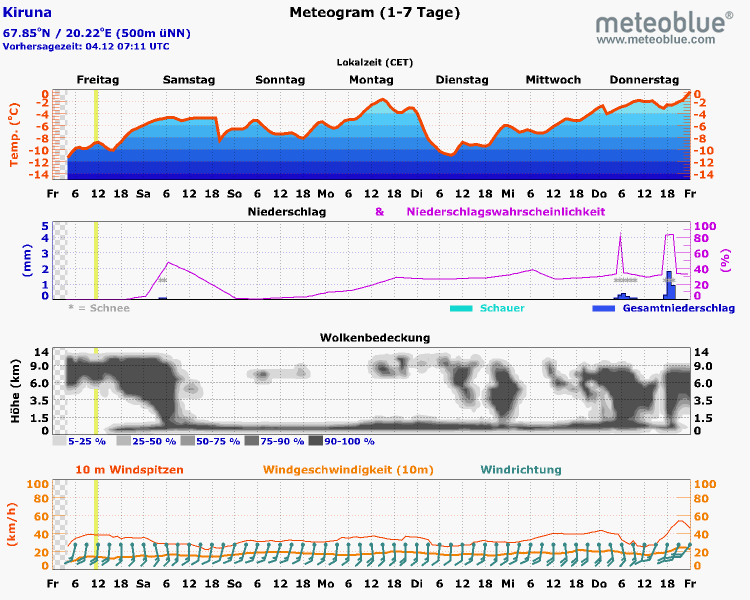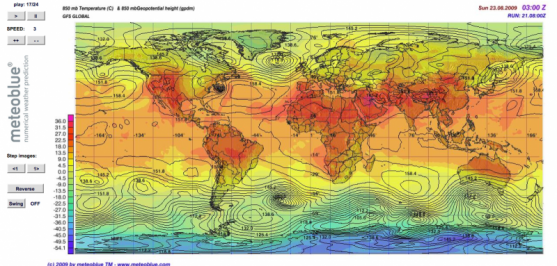Seasons
Seasons are a division of the year into time periods, marked by changes in weather, ecology, and hours of daylight.
Seasons can be:
- winter - spring - summer - autumn.
- wet season - dry season.
- hot season - cool season.
- hurricane season, tornado season or a wildfire season.
Each of these occur at a defined period of the year and has typical characteristics that do not or rarely occur in other seasons.
Solar angle and seasons

Seasons are caused by changes in the inclination of the Earth towards the Sun within one year.
On the picture on the right, the Earth has reached the northern solstice on the 21st June, when the
Northern Hemisphere is most inclined to the Sun and receives most of the sunlight. This causes "summer" in the
Northern Hemisphere, and "winter" (or cool season) in the Southern Hemisphere.
Six months later, on the
21st December, the Earth reaches the Southern solstice, when the Southern Hemisphere is most inclined
towards the Sun and receives most of the sunlight. This causes "summer" in the Southern Hemisphere, and "winter" in
the Northern Hemisphere.
Seasons in different continents
An overview of the weather during the different seasons can be seen in the meteogrammes shown under day length for different places on Earth.
The following examples show the weather during different seasons in several places that are typical for the subtropical, temperate and cold climate zones.
Seasons in the subtropical zones
Campinas (São Paulo, Brazil) lies in the semi-humid (wet-dry) Subtropics on 22.9° southern
latitude. There are two pronounced seasons: summer (with rain) and winter (dry season). Between both, there are
short transition seasons, during which the temperatures rise (spring) and drop (autumn), and during which the
characteristics can alternate between summer and winter at short notice.
Due to the proximity to the tropical zone, temperature differences are only
small between winter and summer.
The 4 meteogrammes show different seasons in Campinas, while the large meteogramme on the right
shows the current weather forecast for this place. Which season do we have now?
Pay attention to the date in
the summer and winter meteogrammes (you find it on the top left of the meteogramme). What differences do you notice
if you compare the date and weather parameters with the same season meteogrammes in the temperate zone? Do not
forget, while considering this, where the two places lie.
Summer
(rainy season)
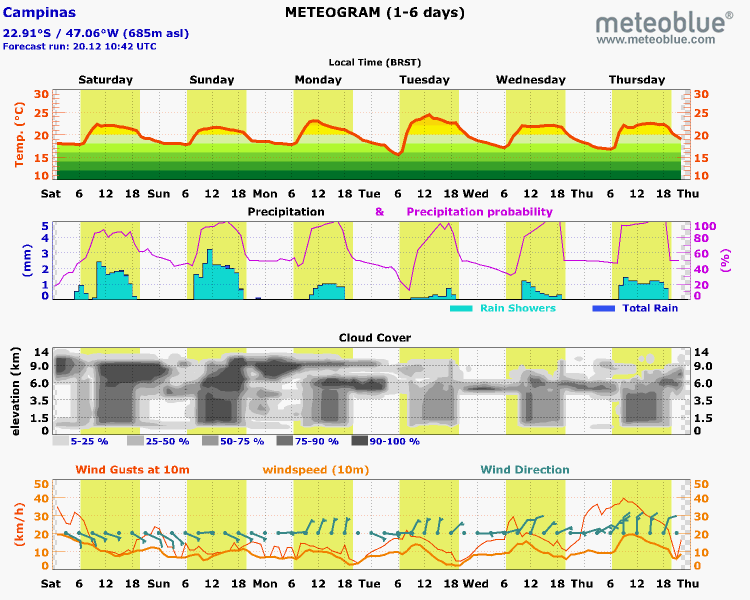
Summer
(rainy season)
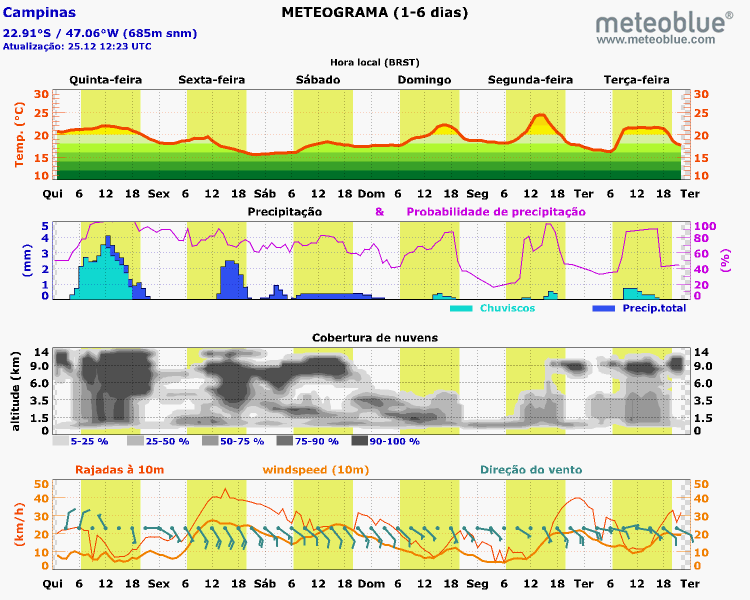
Summer
(dry season)
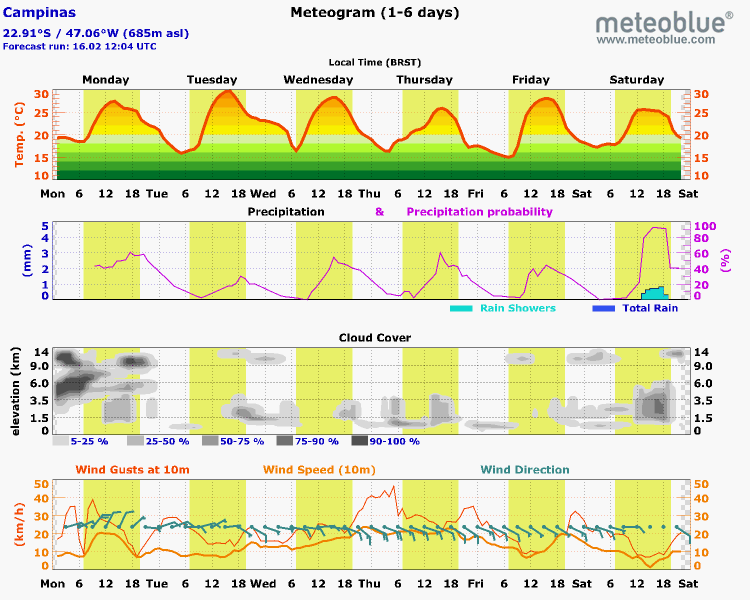
Winter
(dry season)

Seasons in the temperate zone
The seasons of the temperate zone are shown by the example of Basel (Switzerland). To the right, the current weather forecast for Basle is displayed.
- Can you recognise, which season prevails in Basle now?
- From which characteristics do you recognise the season?
- And why is the difference of the weather so large between summer and winter in the temperate zone?
Hint: Do you remember the position of the Sun? Compare the hours of daylight of the winter meteogrammes with those of the summer meteogrammes.
Spring

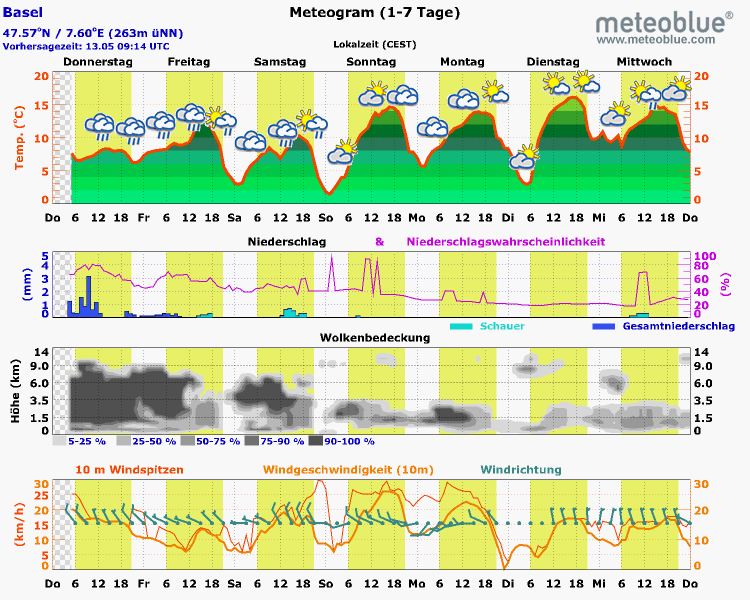
Summer


Autumn
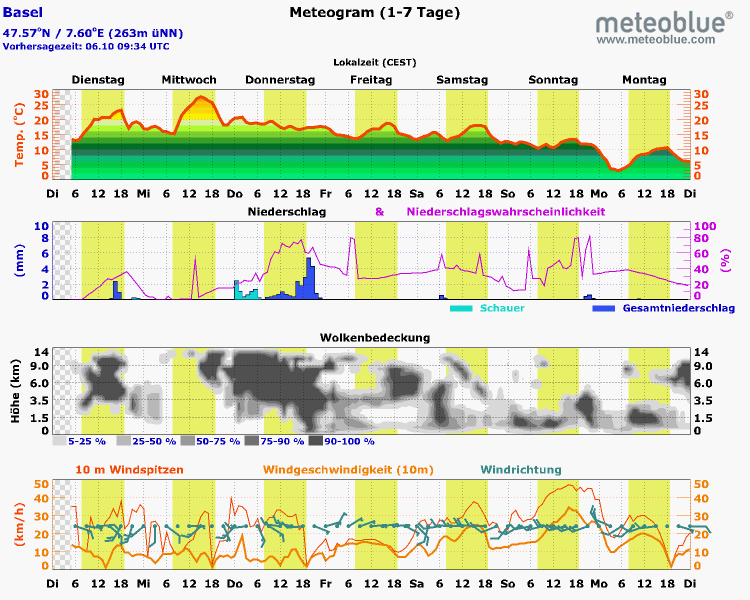

Winter
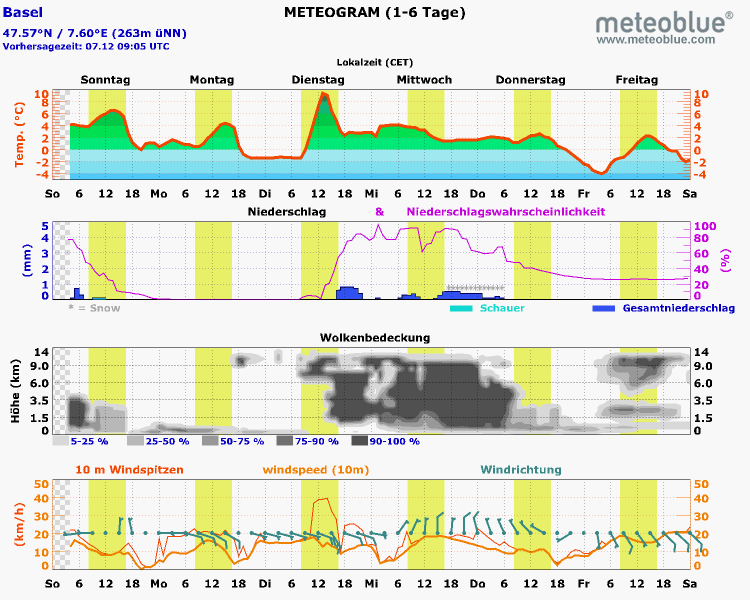
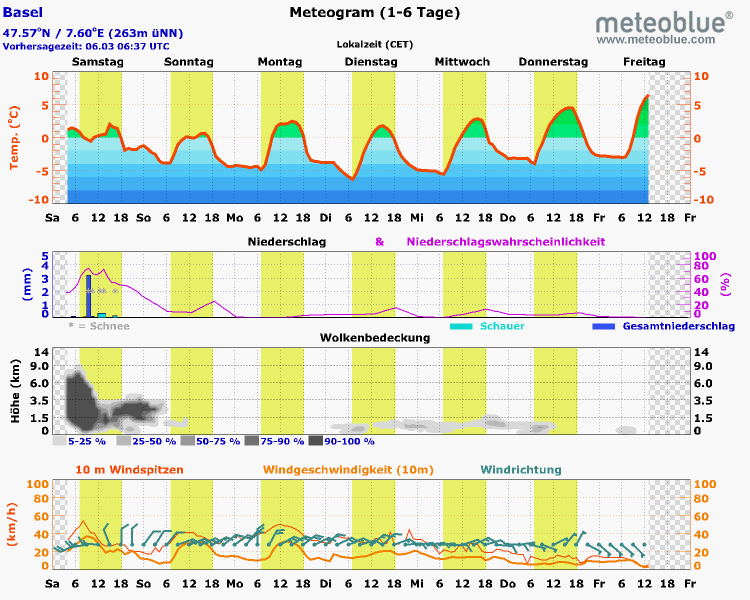
Seasons in the cold climate
In the following diagramme, we present the seasons in Kiruna. Kiruna lies in the north of
Sweden on 67.8°N, in the cold climate zone.
To the right you see the current weather forecast for Kiruna, and
below samples of the seasons.
The day length changes in a greater extent in the cold zone than in the other climate zones. In
summer, the Sun in Kiruna shines 24 hours a day. In winter, it does not rise at all. In the meteogramme for spring
(May), one can recognise how the days become longer; the temperatures rise. Starting from the beginning of June, the
Sun shines continuously; for nearly two months, polar day prevails, so that despite the weaker solar radiation, a
short summer occurs with temperatures up to 30°C - and an invasion of flies which is nearly intolerable for
foreigners.
Then, the days become shorter again. In September, the solar radiation is no longer sufficient to
warm the temperatures significantly during the day; the autumn begins. At the beginning of December, the Sun
disappears under the horizon for the entire day: the onset of the polar night. Without sunlight, temperatures fall
far under the freezing point, and the harsh polar winter prevails for months, with icy temperatures and darkness.
Look at the current meteogramme; which season does prevail in Kiruna right now?
What does happen with the
temperatures during the polar days? And during the polar night?
Does a polar day also occur at the South Pole?
When?
Spring
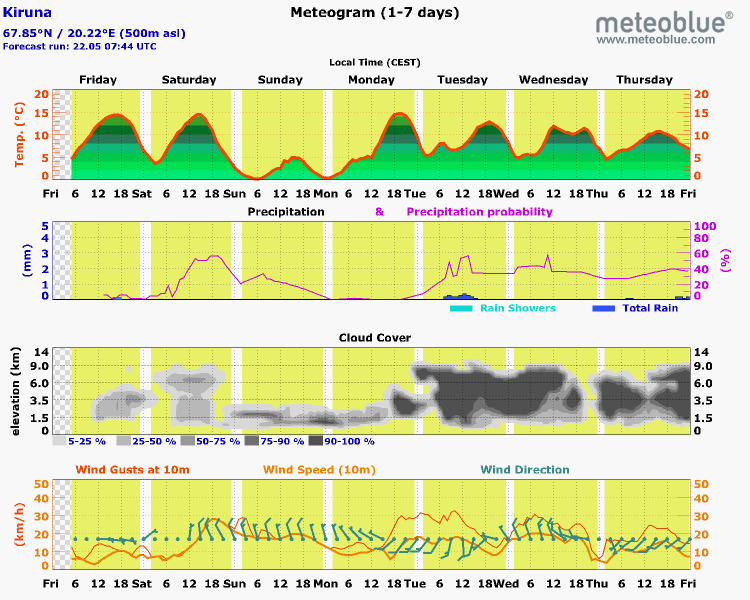
Polar summer
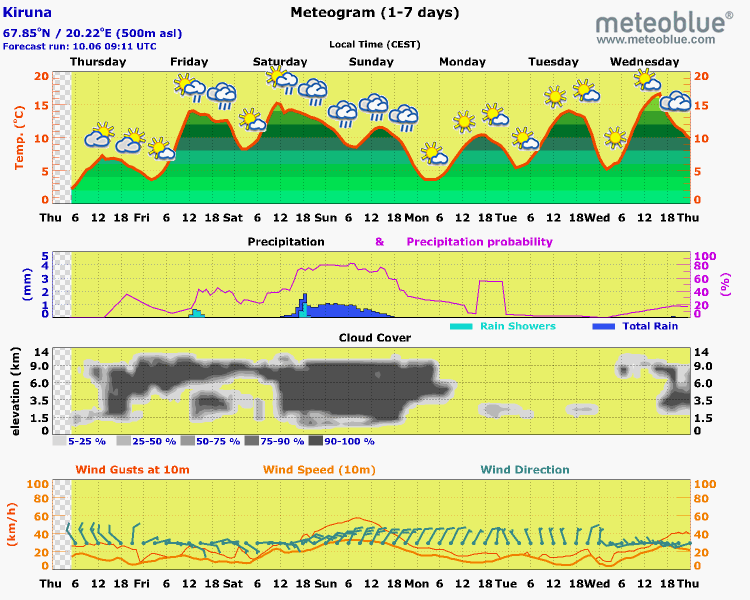
Autumn
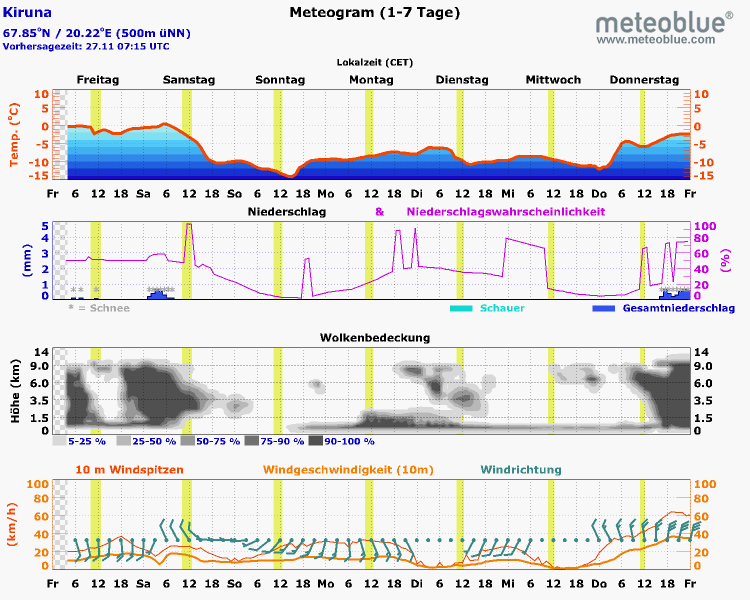
Polar winter
